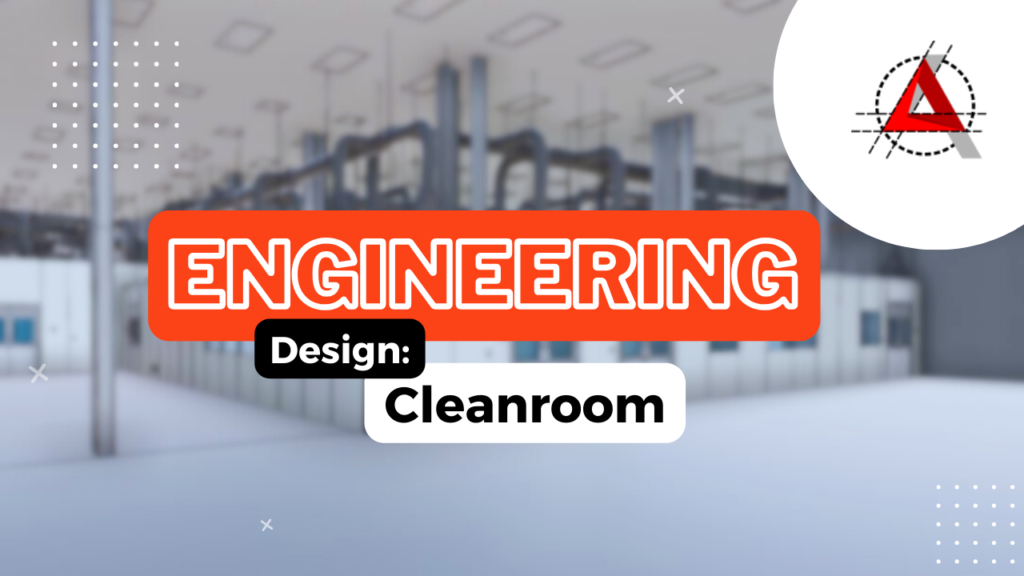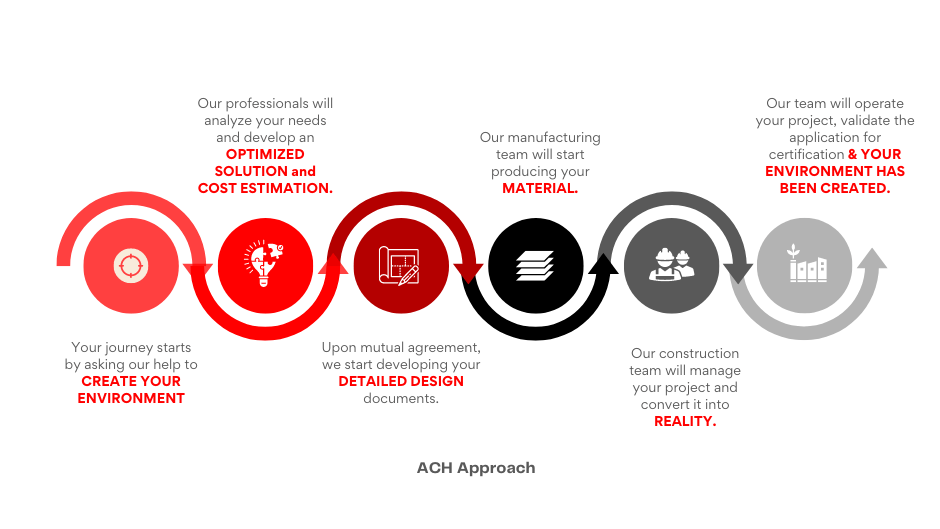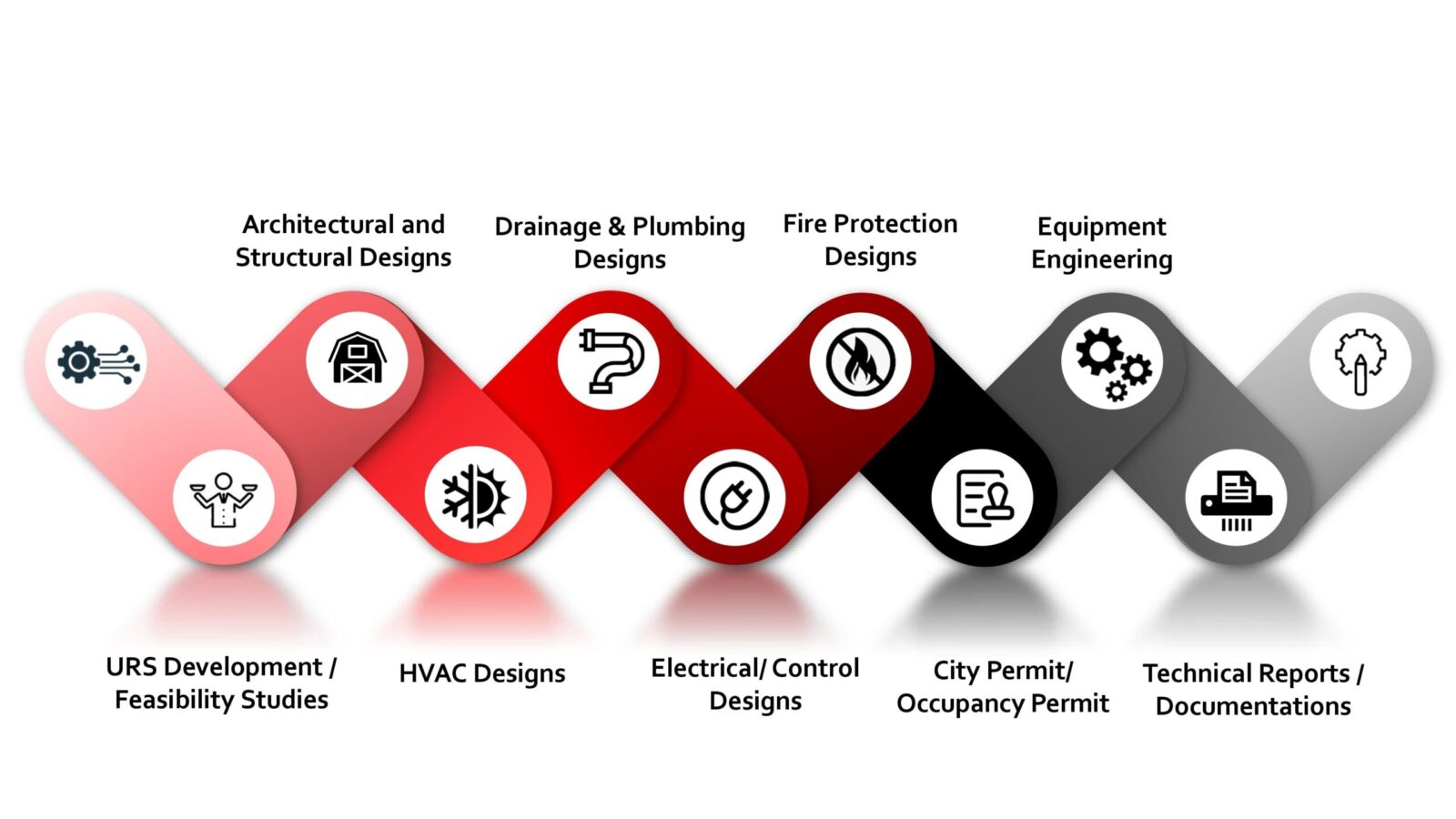Engineering Design: Cleanroom

The design is not just what it looks like and feels like. The design is how it works
— Steve Jobs
What is Cleanroom?
A cleanroom is an enclosed area used for controlled environmental study or manufacturing. Its purpose is to maintain specific environmental conditions by controlling temperature, pressure, humidity, and contamination levels.
Cleanroom facilities are essential to several industries, such as electronics, nanotechnology, medicines, and aerospace. Extremely low concentrations of contaminants including dust, airborne microorganisms, aerosol particles, and chemical vapors are maintained in these regulated environments. To guarantee these facilities’ efficacy and compliance, cleanroom engineering design and management are critical.

Importance of Cleanroom Design and Engineering
In cleanroom facilities, engineering design is essential for several reasons, such as minimizing critical risks, cutting down on capital expenditure, operating expenses, and timelines, and guaranteeing that quality standards are met.
- Reduced Capital Investment: A meticulously planned cleanroom design minimizes initial capital costs by optimizing resource usage, layout planning, and equipment selection.
- Lower Operational Costs: Reduced ongoing operating costs, including energy consumption, maintenance, and repairs, can be achieved by integrating energy-efficient systems and control mechanisms throughout the engineering design phase.
- Faster Timeline: By restricting design revisions, guaranteeing quality requirements are met from the outset, and smoothly coordinating multiple elements, effective engineering design expedites the development process and reduces the project timeline.
- Risk Mitigation: Identifying and resolving such issues early on lowers the chance of expensive delays or mistakes during construction and operation. Comprehensive risk assessment and mitigation techniques are incorporated into the design phase.
- Adherence to Quality Standards: Engineering design guarantees a high degree of quality and dependability in operations by ensuring that cleanroom facilities satisfy strict quality standards and regulatory requirements from the very beginning of the design process.

The Role of Collaboration
Collaboration between stakeholders, including, architects, engineers, and regulatory agencies, are necessary for effective cleanroom design. This multidisciplinary strategy guarantees that every element of functionality, compliance, and contamination control is fully taken care of.
- Interdisciplinary Teams: Engineers collaborate closely with operators and clients to comprehend the needs of the procedures that will be carried out in the cleanroom.
- Regulatory Compliance: Working together with regulatory specialists guarantees that the cleanroom complies with all applicable regulations and standards. These would include ISO, EU GMP, and FDA requirements.
Engineering Design
The feasibility study and User Requirement Specification (URS) development are the first steps in the process. The URS, which outlines the functional, operational, and performance requirements, is the cornerstone of the cleanroom project. It guarantees that all parties involved are aware of the project’s objectives and requirements, which promotes effective decision-making and clear communication.
To create a controlled environment that satisfies strict cleanliness standards, careful consideration of both architectural and structural features is required. A few architectural concerns are choosing non-porous, easily-to-clean materials for the walls, floors, and ceilings, integrating HVAC systems to preserve air quality, and organizing the layout for optimal productivity.
The design’s structural requirements include controlling vibrations, supporting large equipment loads, and allowing for future development. To ensure that the cleanroom runs smoothly and is successful, collaboration between structural engineers, architects, and cleanroom specialists is crucial.

An essential part of a cleanroom’s construction and operation is the HVAC (Heating, Ventilation, and Air Conditioning) system, which provides exact control over the environment to uphold the required standard of cleanliness and operating effectiveness. Maintaining the right humidity and temperature, making sure there are enough air changes per hour (ACH) to reduce particulate contamination, and controlling pressure differentials to stop cross-contamination between zones are all important components of cleanroom HVAC design. Ultra-low penetration air (ULPA) filters may be included in the system for even tougher cleanliness criteria. High-efficiency particulate air (HEPA) filters are required to eliminate airborne particles.
Adequate power distribution, well-placed outlets, and room for future expansion are all required in the electrical design. To lower operating expenses, energy efficiency is also a top goal. Energy-saving technologies and LED lights are integrated.
The smooth integration of these systems is essential to a cleanroom’s proper operation. Developed 3D models make it easier to coordinate the drainage, plumbing, fire safety, and electrical systems with the overall architectural and structural design by using sophisticated engineering tools like Building Information Modeling (BIM). By ensuring that all systems function together, this integration reduces the possibility of contamination and guarantees adherence to legal requirements.
To maintain a regulated environment that satisfies exacting cleanliness standards, engineering design and services play a crucial role in cleanroom facilities. The industries that depend on these specialized settings for their operations are greatly assisted by cleanroom engineering firms, from the first phases of planning and design to continuous maintenance and compliance.
Cleanroom engineering specialists are crucial to the construction and upkeep of the cleanroom facilities that are important to contemporary business, whether they are involved in the precise engineering of HVAC systems, the selection of suitable materials, or the installation of reliable monitoring and control systems.
By embracing the expertise and support of professional cleanroom engineering firms, businesses can benefit from the assurance of compliance, operational efficiency, and the maintenance of a controlled environment necessary for their processes and products.
GET IN TOUCH
Complete the form below to get in touch with our team.
